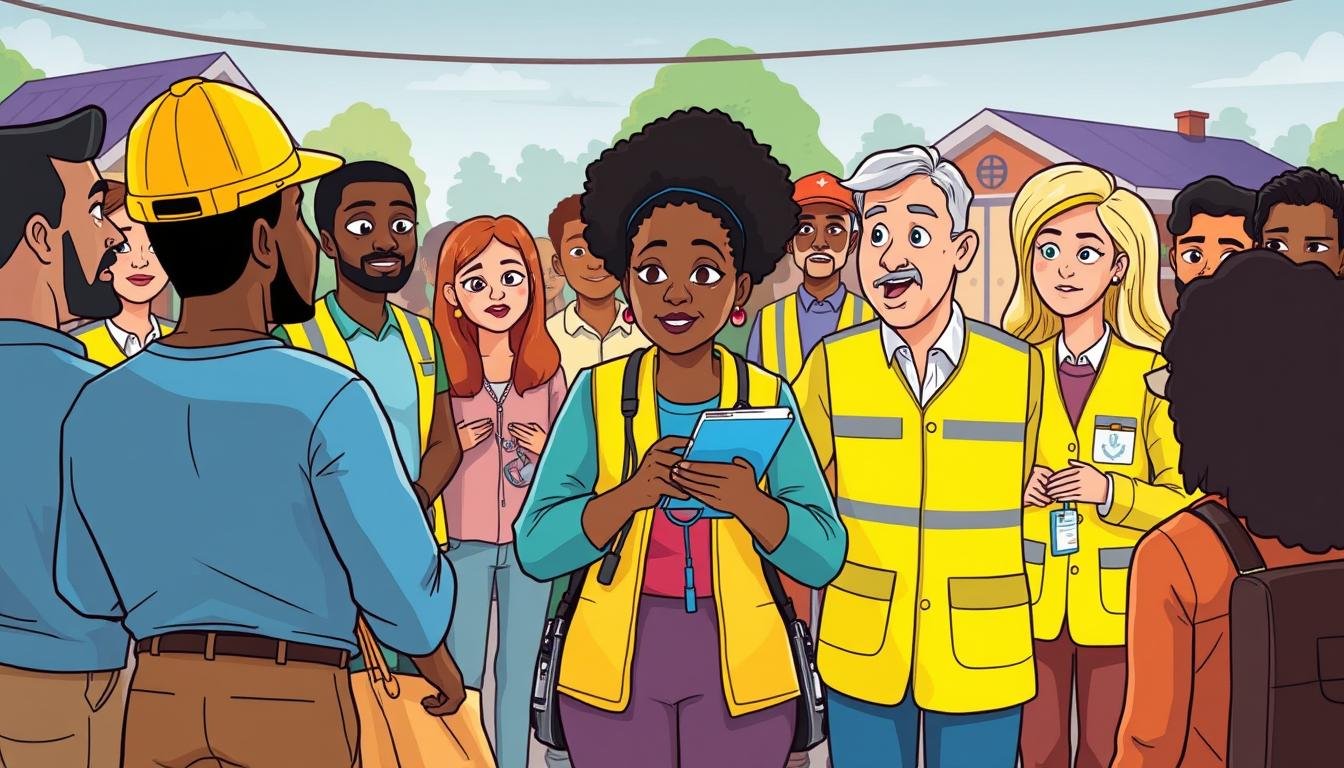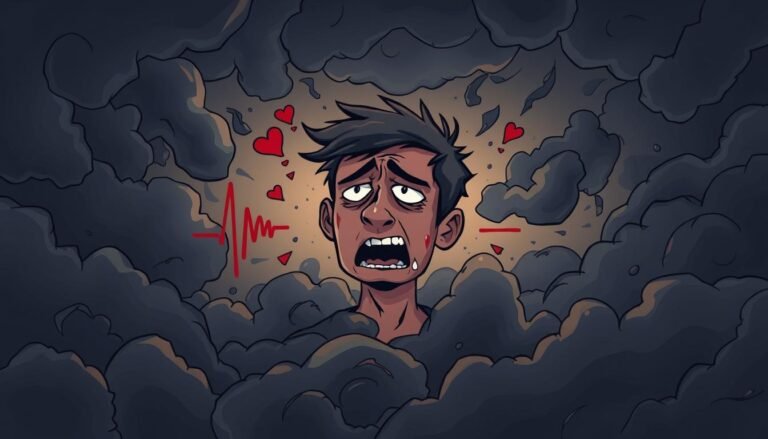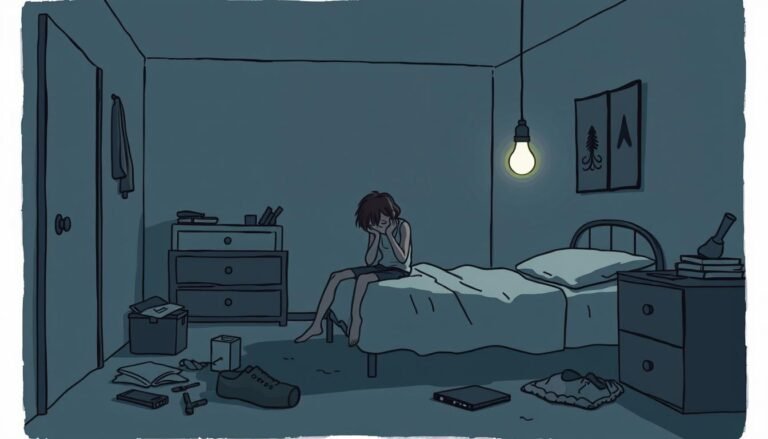Crisis Intervention: Help When You Need It Most
Ever wondered how to get help fast during a mental health crisis? Crisis intervention is like a lifeline in tough times. It gives you the support and emotional care you need right when you need it.
Crisis teams are key in emergency situations. They offer quick help for those in overwhelming situations. This could be after a sudden loss, trauma, or when mental health symptoms get worse.
Research shows crisis intervention can cut down on hospital visits and improve mental health. Emergency rooms with crisis teams see fewer repeat visits and shorter stays for those in crisis.
This isn’t just about quick fixes. It’s a way to stop serious mental health problems from getting worse. Crisis intervention gives timely support and guidance, helping people get through their darkest times and find a way back to recovery.
As we look into crisis intervention, you’ll see the many support options out there. From 24/7 hotlines to community mental health centers. Let’s explore how these services can help you or your loved ones when facing life’s biggest challenges.
Understanding Crisis Intervention Fundamentals
Crisis intervention is crucial for helping people get through tough times. It uses strategies to calm emotions and bring back mental balance. Let’s look at the main parts of crisis intervention and why it’s key in mental health care.
Defining Crisis and Its Impact
A crisis is a sudden event that makes it hard for someone to cope. It can come from things like natural disasters, losing a job, or personal losses. During a crisis, people often feel very emotional and find it hard to function as usual.
Core Principles of Intervention
Effective crisis intervention has a few main principles:
- Immediate action
- Limited, achievable goals
- Instilling hope
- Providing support
- Problem-solving focus
- Maintaining self-image
- Fostering self-reliance
These principles help professionals use Psychological Triage and Crisis De-escalation techniques.
When Crisis Intervention Is Needed
Crisis intervention is needed when people face:
- Acute increases in mental health symptoms
- Suicidal thoughts
- Traumatic events
- Significant life changes
In these cases, a detailed Risk Assessment is key to figuring out how much support is needed.
| Crisis Type | Duration | Intervention Focus |
|---|---|---|
| Situational | 1-3 sessions | Immediate stabilization |
| Maturational | 3-6 sessions | Adaptive coping strategies |
| Acute Mental Health | 4-6 sessions | Symptom relief and referral |
Knowing these basics helps both professionals and individuals deal with crises better. It supports recovery and builds resilience.
Types of Mental Health Crises
Mental health crises can take many forms, each needing its own solution. It’s key to know these types to offer the right help and stop suicides.
Crisis counselors divide mental health emergencies into three main types:
- Creeping crisis
- Slow burn crisis
- Sudden crisis
A creeping crisis hints at deeper problems that may grow over time. It can make it hard to handle stress and keep relationships strong. Slow burn crises start with small stressors that build up, leading to a breaking point. Sudden crises, like job loss or a traumatic event, hit hard and fast.
Trauma counseling is crucial for dealing with crises caused by upsetting events. These can include:
- Witnessing or experiencing violence
- Loss of a loved one
- Natural disasters
- Severe accidents
| Crisis Type | Examples | Key Interventions |
|---|---|---|
| Suicidal Ideation | Thoughts of self-harm, planning suicide | Immediate psychiatric assessment, safety planning |
| Panic Attacks | Intense fear, rapid heartbeat, shortness of breath | Grounding techniques, cognitive-behavioral therapy |
| Substance-Induced | Cognitive impairment due to drug or alcohol use | Detoxification, addiction counseling |
Crisis intervention services aim to help in these varied situations. They offer quick support and connect people with the right care. Mental health experts can tailor their help based on the crisis type.
The SAFER-R Model in Crisis Response
Crisis intervention uses the SAFER-R Model. This method guides professionals in helping those in distress. Let’s see how it works in real situations.
Stabilization Techniques
The first step is to ensure safety. Crisis responders check for risks and make a calm place. They might remove dangerous items or find a quiet spot to talk.
Acknowledgment and Assessment
Responders listen well and accept feelings. They collect information about the crisis. They look for signs like sudden mood changes or feeling alone. This helps tailor the help to the person’s needs.
Facilitating Understanding
Explaining things can help reduce fear. Responders help people understand their experience and feelings. This makes them feel less alone and builds trust.
Encouragement and Recovery Steps
It’s important to find ways to cope. Responders help people find ways to deal with stress. This might include relaxation techniques or reaching out to support groups.
Referral Process
Long-term support is key. Responders connect people with resources like community programs or mental health services. This ensures they get help even after the crisis is over.
“The SAFER-R Model is highly effective in providing psychological interventions to individuals following critical incidents.”
By following these steps, crisis teams can offer full support. The SAFER-R Model meets immediate needs and prepares for long-term recovery.
Crisis Intervention Teams and Services
When mental health emergencies happen, crisis teams and services jump in to help. They offer quick support, making sure people get the care they need right away.
Emergency Response Units
Emergency response units are key in mental health support. They are often part of local police, trained to handle crisis situations safely. The Crisis Intervention Team (CIT) program, known as the “Memphis Model,” has grown to over 2,700 communities since 1988.
In Memphis, CIT led to an 80% drop in officer injuries during mental health calls.
Community Mental Health Centers
Community mental health centers are local crisis hubs. They provide outpatient support, assessments, and ongoing care. These centers are cheaper than jail, helping people without breaking the bank.
In Detroit, it costs $31,000 a year to keep someone with mental illness in jail. But community treatment only costs $10,000 annually.
24/7 Crisis Hotlines
Crisis hotlines offer support any time of day. The National Suicide Prevention Lifeline (988) provides help by phone or text. These services are free and vital for those facing mental health crises.
Studies show they are effective in helping people in crisis.
Source Links
- How a Crisis Intervention Provides Mental Health Support
- Crisis Intervention – StatPearls – NCBI Bookshelf
- The Six-Step Crisis Intervention Model Explained
- Crisis Intervention
- Crisis Intervention Strategies – CMA Consult
- Types of Mental Health Crises
- Mental Health Crisis: Signs, Types & What to Do — Talkspace
- The Different Types of Psychological Crisis
- What is the Safer-R model for crisis intervention? – Grow Therapy
- ICISF SAFER-R Model Addresses Immediate Biopsychosocial Model Needs – ICISF
- Crisis Intervention Team (CIT) Programs
- CIT International – What is CIT?
- Crisis Intervention Team








